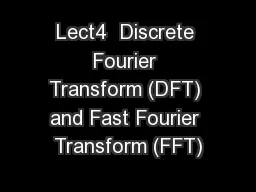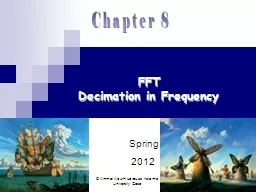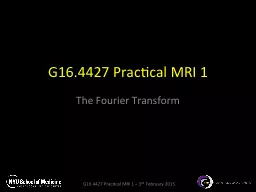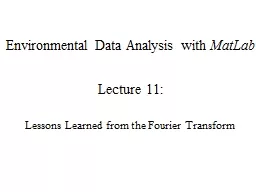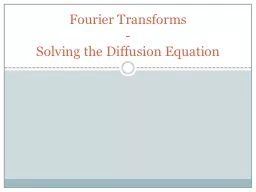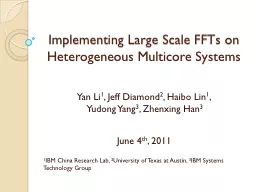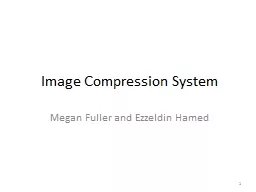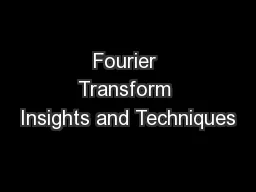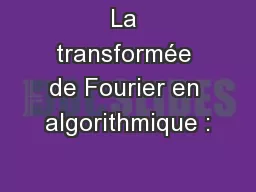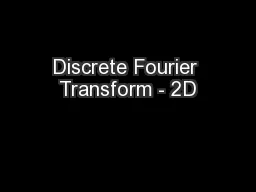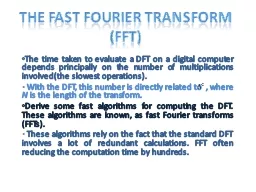PPT-Lect4 Discrete Fourier Transform (DFT) and Fast Fourier Transform (FFT)
Author : tatiana-dople | Published Date : 2018-03-08
41 DFT In practice the Fourier components of data are obtained by digital computation rather than by analog processing The analog values have to be sampled
Presentation Embed Code
Download Presentation
Download Presentation The PPT/PDF document "Lect4 Discrete Fourier Transform (DFT) ..." is the property of its rightful owner. Permission is granted to download and print the materials on this website for personal, non-commercial use only, and to display it on your personal computer provided you do not modify the materials and that you retain all copyright notices contained in the materials. By downloading content from our website, you accept the terms of this agreement.
Lect4 Discrete Fourier Transform (DFT) and Fast Fourier Transform (FFT): Transcript
Download Rules Of Document
"Lect4 Discrete Fourier Transform (DFT) and Fast Fourier Transform (FFT)"The content belongs to its owner. You may download and print it for personal use, without modification, and keep all copyright notices. By downloading, you agree to these terms.
Related Documents

